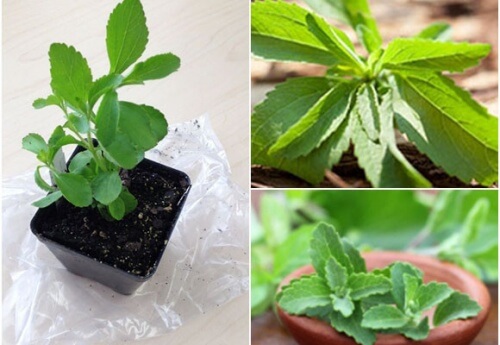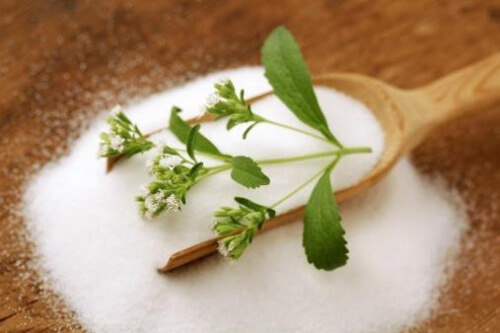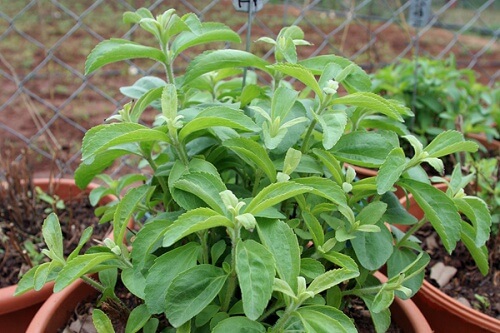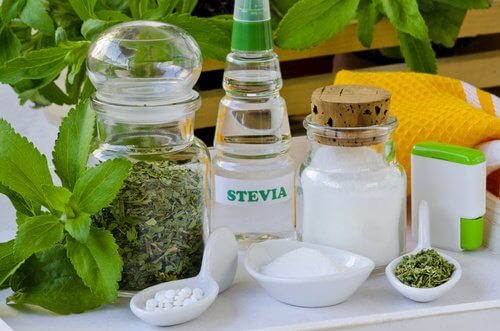Make Your Own Sweetener: How to Grow Stevia at Home

Stevia is a tropical plant that’s considered to be a multi-annual plant. This means you can grow stevia for 4 to 5 years. In spring it sprouts new shoots, which grow from under the roots. From then through mid-August, it will produce slips similar to those of geraniums.
However, you shouldn’t plant new shoots that flower, because they’ll never form roots. These flowers also will never produce seeds that can germinate, which is why it can only be cultivated through cuttings.
So if you plant from a good variety, you will have an endless production of this medicinal plant.
And even though a lot of people still don’t know much about it, this is a powerful weapon against high blood sugar levels, high blood pressure, and various digestive problems.
It’s also believed to help people that suffer from anxiety and severe disorders, like obesity.
How to grow stevia at home

It’s possible to grow stevia plants in your home garden, especially if you are interested in using it for health reasons.
To do so, keep in mind a few guidelines for cultivation, along with certain care regimens and the correct way to collect leaves.
Materials
- 1 large pot
- The last 4 inches of a stevia shoot (make sure it doesn’t have a flower)
- Peat moss (enough to fill the pot)
- Water for watering
Step 1
Fill the pot with the peat moss, which you can get at a garden center. Water it a bit,until the peat moss is moist.
Step 2
Remove 2 or 3 leaves from the lower part of the stevia shoot, to facilitate transplant. Bury it and make sure to use your fingers to press around the stalk so that it comes into contact with the moist peat moss.
Keep in mind that you shouldn’t let much time pass between when you cut the shoot to when you plant it.
Step 3

Place the pot in a shaded area to avoid direct sunlight. You should water it 3 times a day to make sure that the peat moss stays sufficiently moist.
Step 4
After 28 or 30 days, you might notice that the stevia shoot starts to straighten up. Once it starts to sprout leaves, you can place it in a sunnier location so that it doesn’t stop growing.
- When you transplant the shoot into your garden, start removing new leaves. You’ll only need to water once a day.
- In summer, water every day, but in spring and fall, make sure the earth isn’t moist before watering.
- In winter, only water as necessary. Too much moisture will rot the roots.
Step 5
At the end of fall, when you notice that the plant is full of flowers and doesn’t want to grow anymore, that is the time to cut it back, leaving it at 10 cm in height.
Step 6
To dry the leaves that still remain, try not to expose them to direct sunlight, so they don’t lose their properties.
You can dry them in small amounts in the house, which generally has a better temperature for this.
Read more: How Stevia and Cinnamon May Help People with Diabetes
Stevia’s medicinal uses

Until now, type 1 diabetes cases can only be treated with insulin.
But consuming stevia is believed to control excess glucose in the blood, while also alleviating discomfort in the digestive tract and the cardiovascular system.
People with an obesity disorder can help themselves by consuming stevia to burn fat more easily.
It also has diuretic properties, which can be a great remedy for cleansing the kidneys and releasing excess fluids.
How can you consume it?
We recommend eating 4 soft leaves before or along with breakfast, and another 4 leaves during dinner.
When you don’t have fresh leaves, you can also use dried leaves in an infusion. Make this every time you want to drink it, or you can make a batch for up to two days.
Ingredients
- 2 Tbsp. dried, crushed stevia leaves
- 1 liter water
Directions
- Boil the liter of water. Once boiling, remove from heat and add the two tablespoons of dry stevia.
- Steep for at least 30 minutes before drinking, so that the leaves release their properties into the water.
- Strain the infusion and drink once a day.
So go ahead and grow stevia at home – it’ll be very rewarding, and you’ll have an excellent ally for your body and health.
All cited sources were thoroughly reviewed by our team to ensure their quality, reliability, currency, and validity. The bibliography of this article was considered reliable and of academic or scientific accuracy.
- Durán A, S., Rodríguez N, M. del P., Cordón A, K., & Record C, J. (2012). Estevia (stevia rebaudiana), edulcorante natural y no calórico. Revista Chilena de Nutrición. https://doi.org/10.4067/S0717-75182012000400015
- Daza Torres, M. C., Meneses Carvajal, H. S., Reyes Trujillo, A., & Urrutia Cobo, N. (2017). Necesidades hídricas de estevia calculadas con el coeficiente del cultivo. Agronomía Mesoamericana. https://doi.org/10.15517/ma.v28i2.24354
- Goyal, S. K., Samsher, & Goyal, R. K. (2010). Stevia (Stevia rebaudiana) a bio-sweetener: A review. International Journal of Food Sciences and Nutrition. https://doi.org/10.3109/09637480903193049
- Yadav, A. K., Singh, S., Dhyani, D., & Ahuja, P. S. (2011). A review on the improvement of stevia [ Stevia rebaudiana (Bertoni)]. Canadian Journal of Plant Science. https://doi.org/10.4141/cjps10086
- Shivanna, N., Naika, M., Khanum, F., & Kaul, V. K. (2013). Antioxidant, anti-diabetic and renal protective properties of Stevia rebaudiana. Journal of Diabetes and Its Complications. https://doi.org/10.1016/j.jdiacomp.2012.10.001
This text is provided for informational purposes only and does not replace consultation with a professional. If in doubt, consult your specialist.








